Make Dental Work Easier
Bring the best Chinese digital dentistry solution to Africa.
In the dynamic landscape of dental technology, the rise of intraoral scanners has heralded a new era where convenience and precision reign supreme. These cutting-edge devices have turned the tide against the cumbersome traditional impression methods, offering a symphony of benefits including enhanced patient comfort, pinpoint accuracy, and a choreography of streamlined dental workflows. Yet, with the market offering a treasure trove of options, the power of choice demands a discerning eye. This guide will demystify the process, shining a light on the crucial elements to ponder when pinpointing the ideal intraoral scanner that will integrate seamlessly into the rhythm of your practice.
1. Scan Accuracy (Trueness and Precision)
One of the primary factors to evaluate in an intraoral scanner is its scan accuracy. Trueness refers to how closely the digital scan matches the actual physical model, while precision refers to the consistency of repeated scans. A reliable scanner should exhibit high trueness and precision to ensure accurate digital representations of the patient's oral structures. Look for scanners that have been validated through accuracy studies and have demonstrated excellent accuracy levels such as Sirona Primescan, 3shape Trios 5/4/3, Alliedstar AS 200E/AS 100.
Be cautious of those intraoral scanners that have accuracy shift issue(low precision with data accuracy not predictable each time), such as brand DMI.
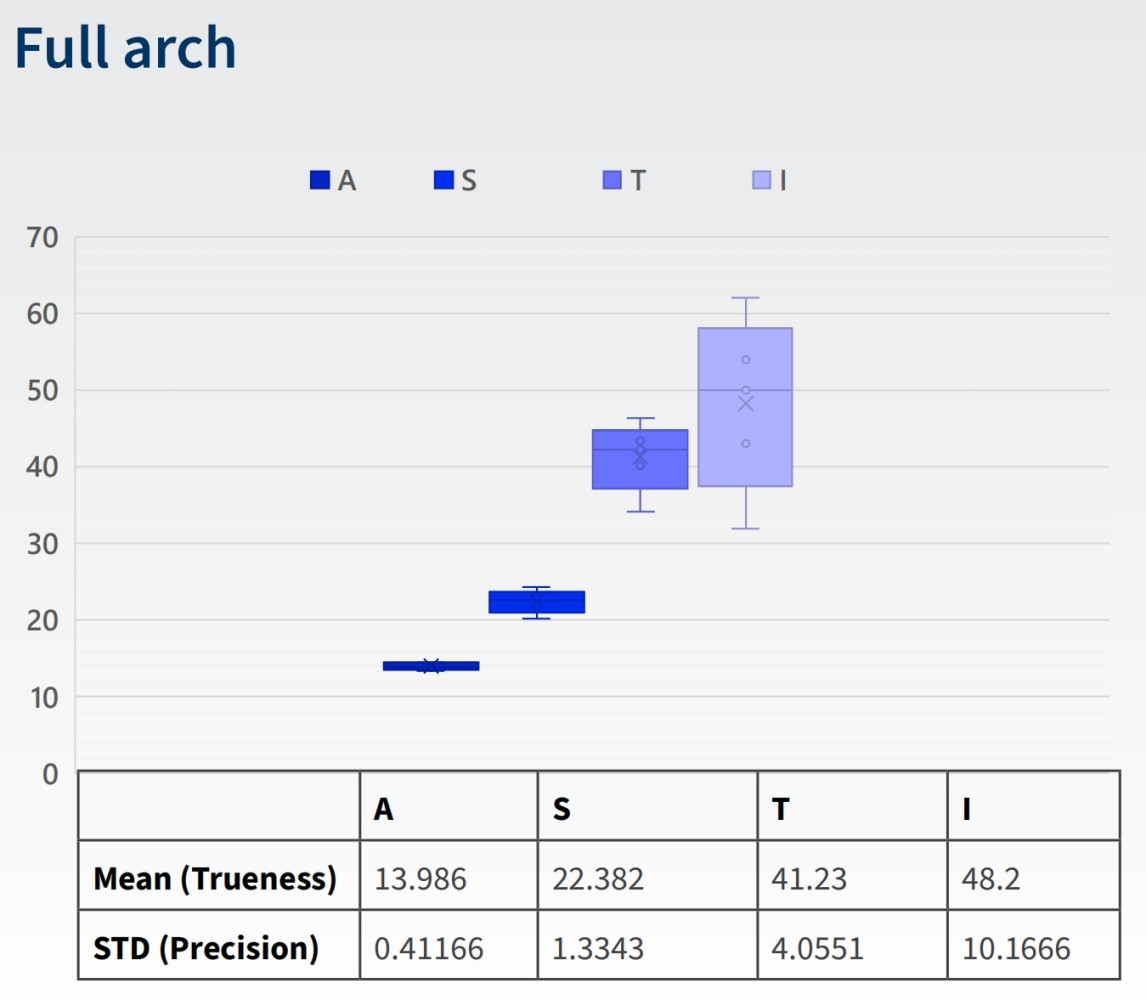
intraoral scanner trueness and precision
2. Scan Accuracy at Different Speeds
When it comes to intraoral scanners, the race for speed should never edge out accuracy. Pit your potential scanner against the challenge of varying velocities. Will it falter or flourish when the pace picks up? Make sure your choice stands steadfast, delivering unwavering precision with every swift sweep. Opt for a scanner that promises a steadfast ally in your quest for quick, yet unerring captures, turning every nuanced nook into a perfectly mapped masterpiece. With the right scanner, speed and accuracy aren't just partners; they're a powerhouse duo in your dental toolkit.
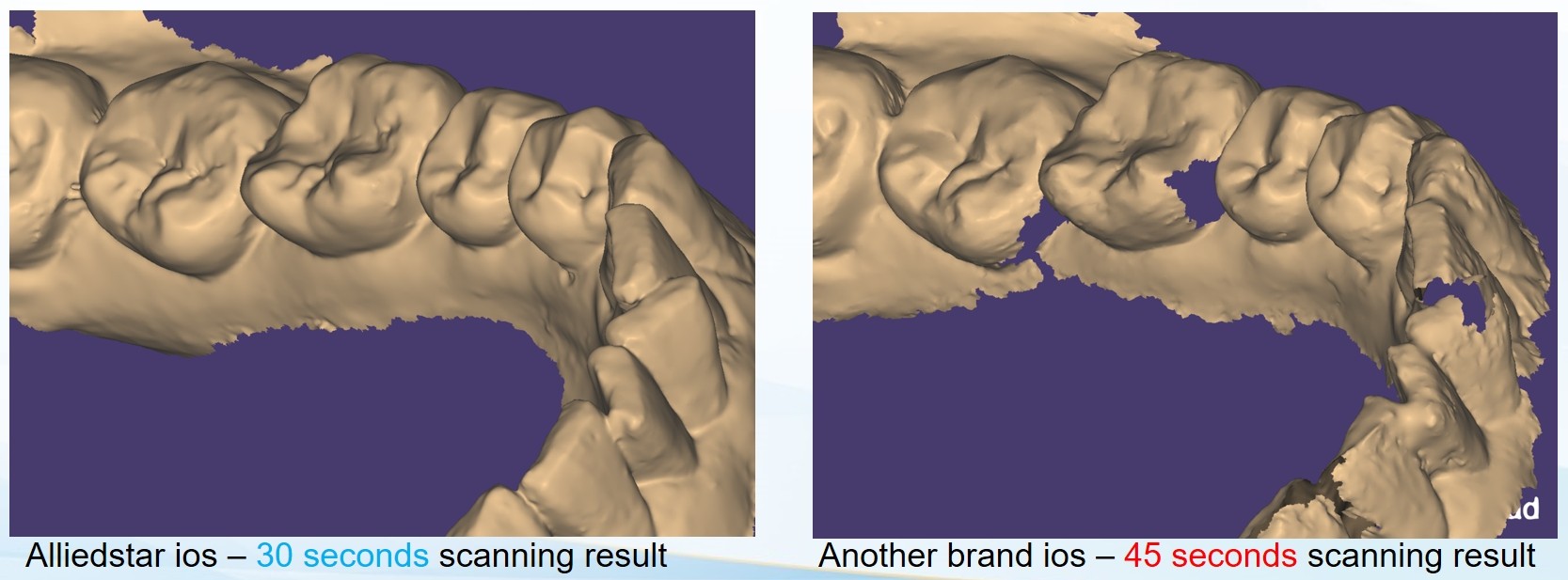
fast&accurate scan
3. High Definition Capabilities
The quality of the scanned images plays a vital role in the success of digital dentistry. Evaluating a scanner's high-definition capabilities involves assessing its ability to capture fine details, such as margin lines, occlusal surfaces, and mesh layouts. Look for scanners that offer superior image resolution and clarity, as this will enhance the precision and accuracy of the subsequent digital models.
There is a misleading concept that the data looks more sharpness, the data is better with more definition, enhancing the sharpness by increasing the contrast rate is not hard by compromising the accuracy, but that makes data errors at the same time, so only good sharpness based on accurate data make senses.
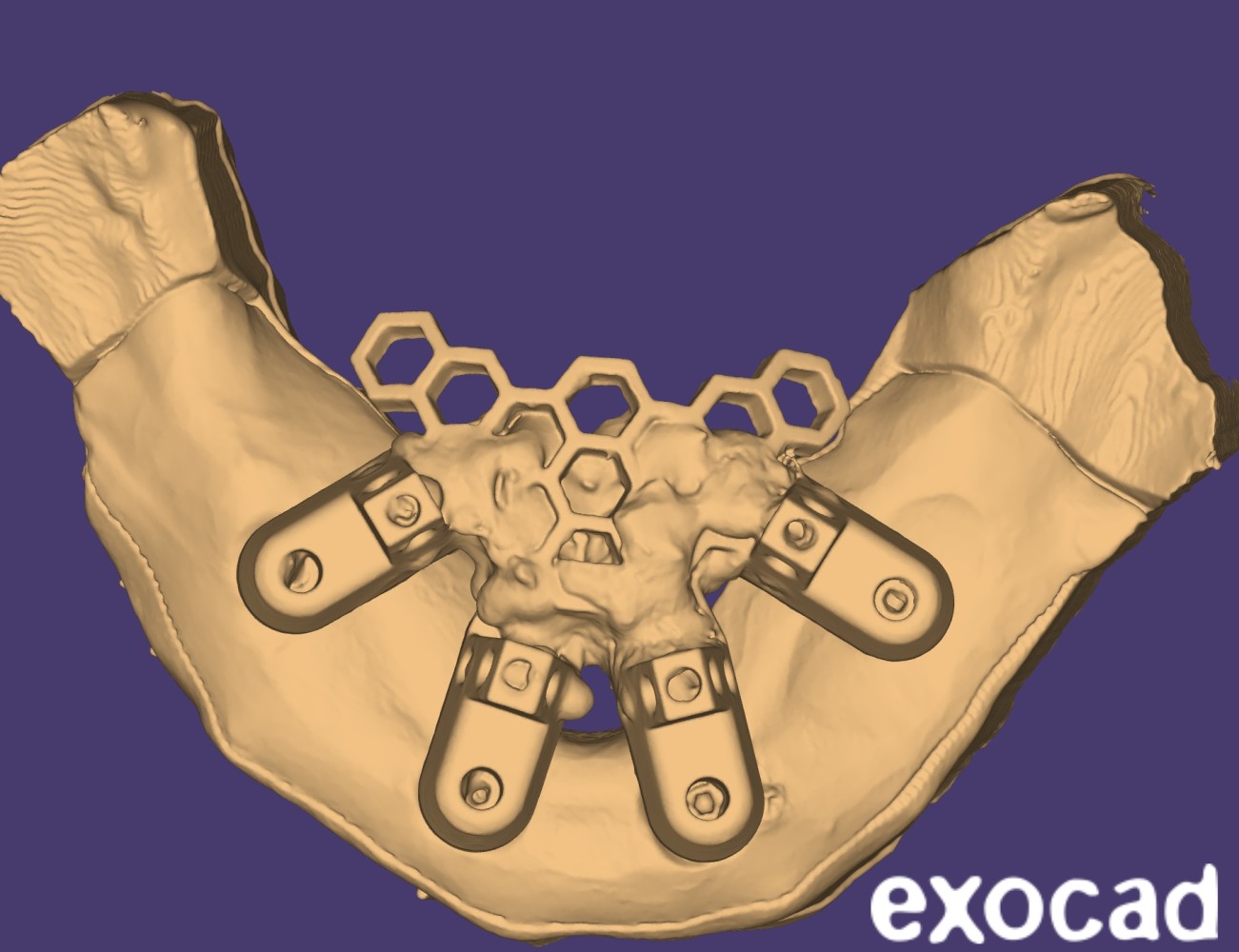
Alliedstar ios scan data
4. Accurate Bite Scans
An intraoral scanner should be capable of accurately capturing different bite positions. Whether it is a normal bite, overbite, or multi-occlusion, the scanner should be able to capture the occlusal relationship with precision. Assess how well the scanner can capture occlusal details and ensure that it provides accurate bite registration for proper treatment planning and fabrication of restorations.
Through different bite pressure may cause the overbite issue, but the real accurate bite scan challenge is from those missing teeth part!
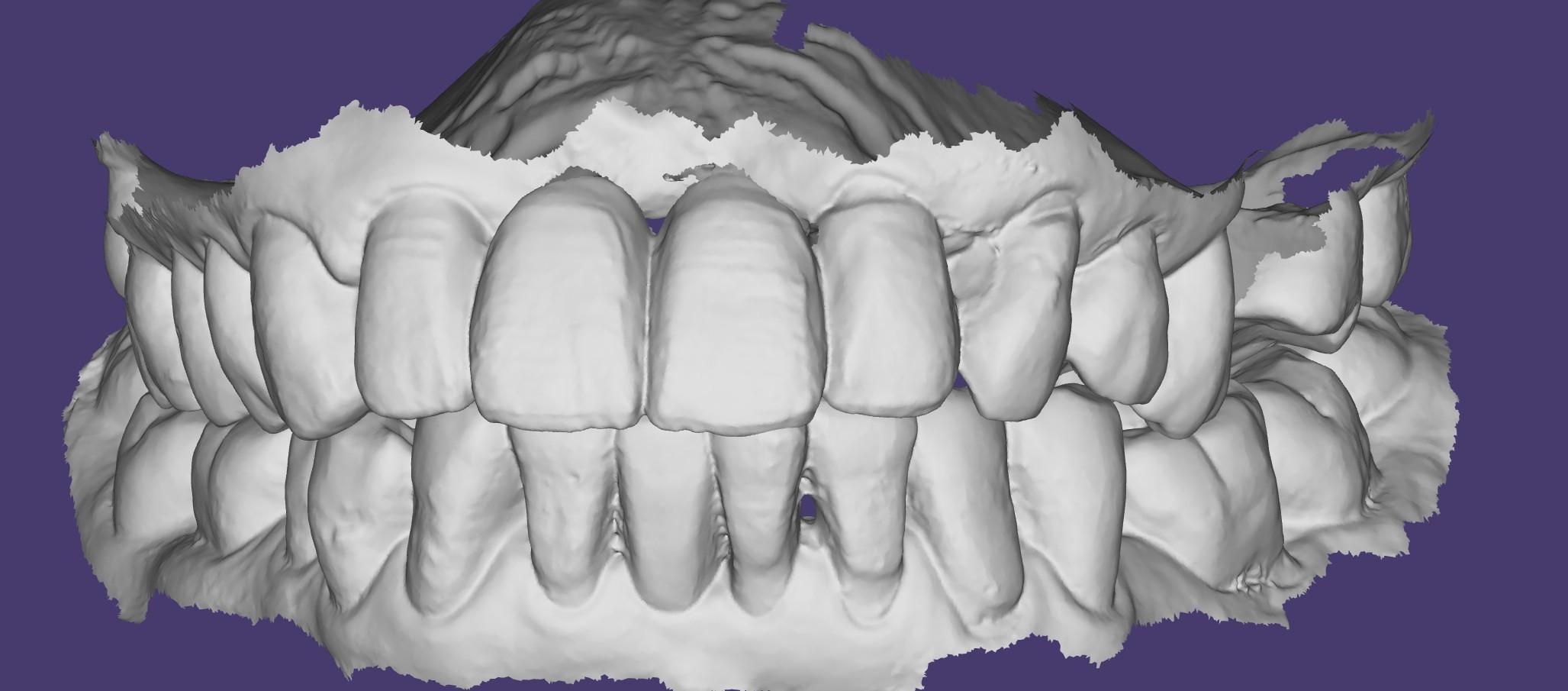
Alliedstar ios full arch bite
5. Color Performance
Realistic color data is important not only for patient engagement but also for diagnostics. The scanner should be able to accurately capture and reproduce natural tooth shades and textures. By providing realistic color information, the scanner enhances the visualization of the final restoration for both the dentist and the patient.
Realistic color data display is the foundation of patient engagement, but most scanners has issue on overcoming the dark color rendering issue on transparent teeth part, while, we can see some scanners are doing well with that, such as iTero Element 5D, Alliedstar AS 200E/ AS 100, 3shape Trios.
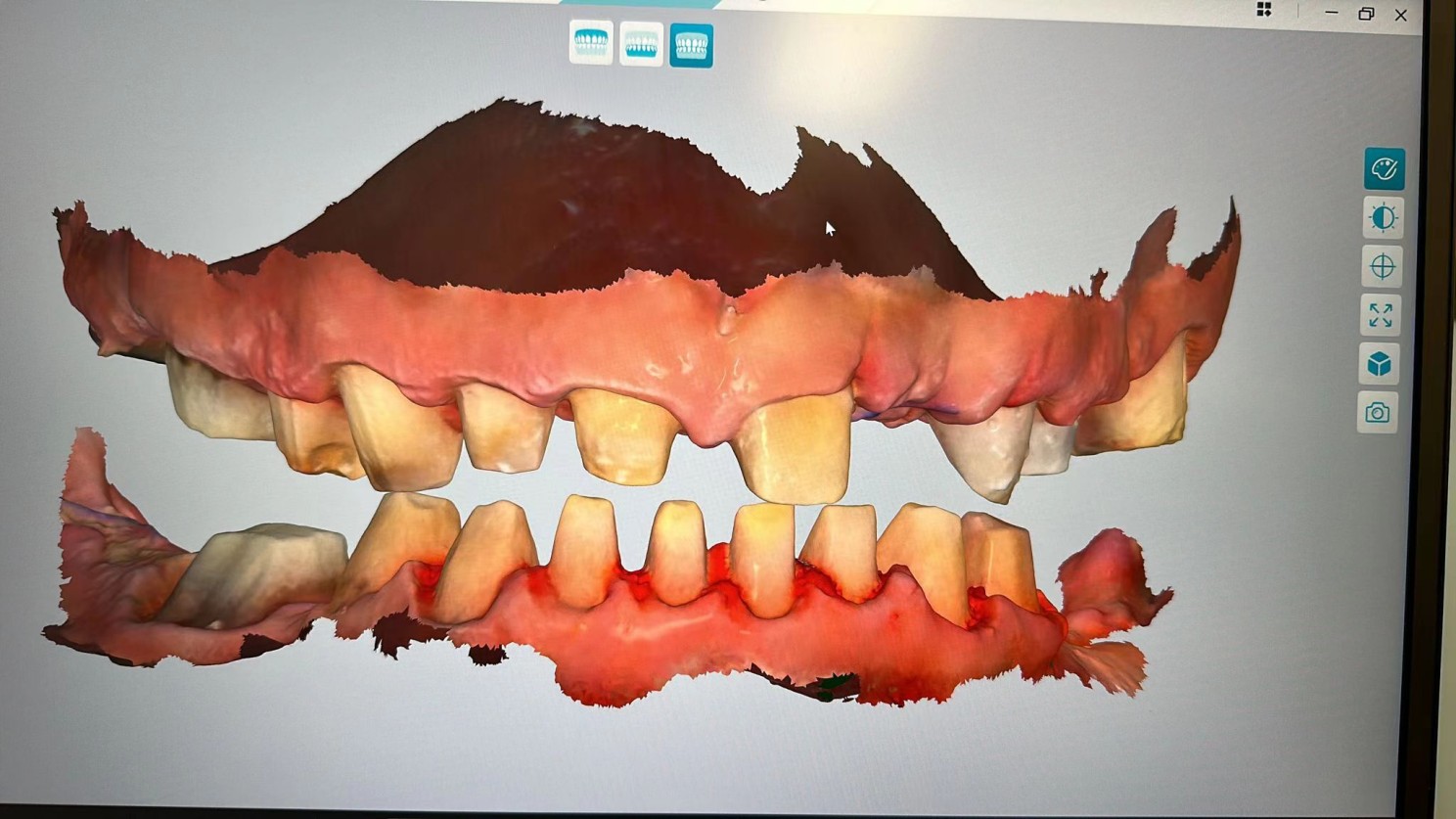
Alliedstar ios full arch scan data
6. Solutions for Complex Cases
Evaluate whether the scanner offers solutions for complex cases such as scanning long bridges, edentulous patients, or full arch implants. These challenging scenarios require a scanner that can capture extensive oral structures accurately. Additionally, consider the specific workflow supported by the scanner for handling such cases. Look for features like seamless stitching of multiple scans, efficient data processing, and compatibility with advanced treatment planning software.
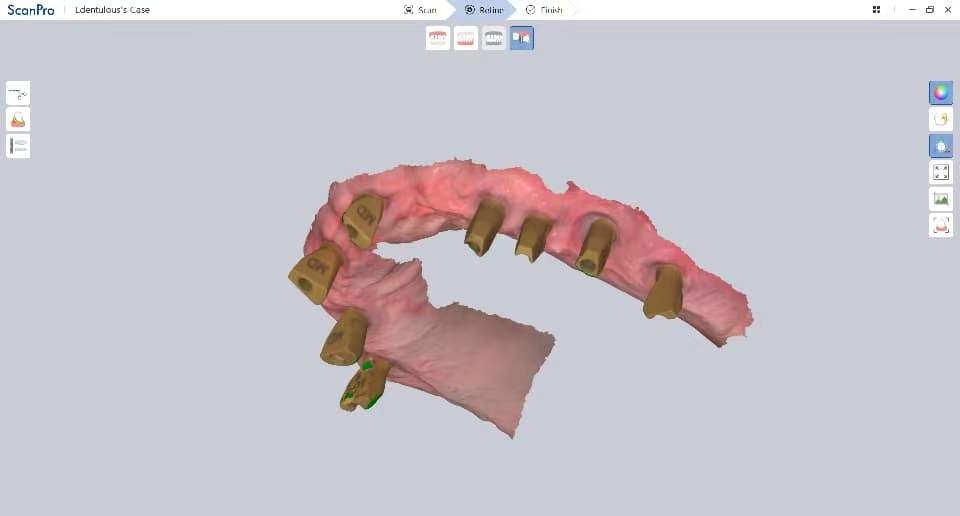
Alliedstar ios edentulous scan data
In the dynamic landscape of dental technology, the rise of intraoral scanners has heralded a new era where convenience and precision reign supreme. These cutting-edge devices have turned the tide against the cumbersome traditional impression methods, offering a symphony of benefits including enhanced patient comfort, pinpoint accuracy, and a choreography of streamlined dental workflows. Yet, with the market offering a treasure trove of options, the power of choice demands a discerning eye. This guide will demystify the process, shining a light on the crucial elements to ponder when pinpointing the ideal intraoral scanner that will integrate seamlessly into the rhythm of your practice.
Copyright © 2024 Golden Promise Dental Co.,Ltd. | All Rights Reserved
We are here to help you! If you close the chatbox, you will automatically receive a response from us via email. Please be sure to leave your contact details so that we can better assist